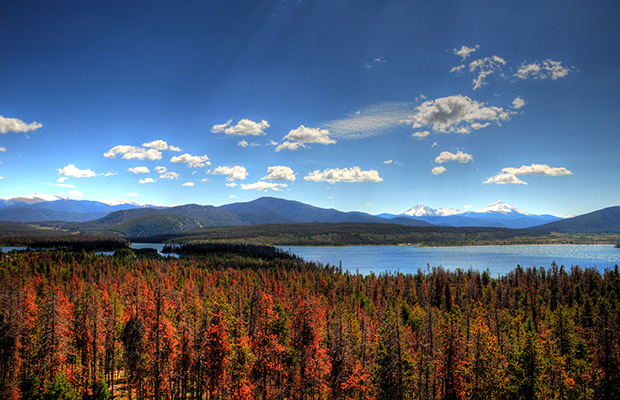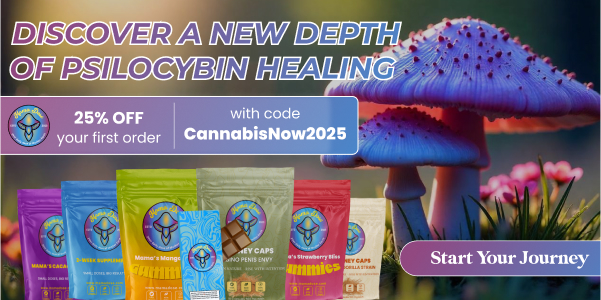
Politics
Colorado Chief Health Officer: Marijuana Legalization Hasn’t Done Much
Legal cannabis in Colorado hasn’t caused many issues or changes.
Larry Wolk is the executive director of Colorado’s Department of Public Health and Environment. This makes him the top government health official in the first state to allow over-the-counter sales of recreational marijuana — and, as such, a leading authority on what cannabis does (and doesn’t) do to the body and to the body politic.
Wolk is also a skeptic. Reacting to several recently published studies (and one to be released soon) linking the availability of legal marijuana with a decrease in opiate overdoses and opiate-overdose related death, Wolk preached caution. It’s too early to say cannabis will solve the opiate crisis, he told the Denver Post, and the initial findings that legal cannabis in Colorado reduced fatal overdoses in that state by 6.5 percent are just that: preliminary data.
But Wolk can tell you what marijuana legalization does to a place, broadly. And in the years since Colorado voters legalized cannabis in November 2012 and states began on Jan. 1, 2014, Wolk has had to deal with — well, not much at all.
Colorado officials have seen no “significant issues as a result of legalization,” Wolk told a radio morning-show broadcast on tiny Prince Edward Island in Canada, where Prime Minister Justin Trudeau’s Liberal government is set to follow American states’ leads and legalize marijuana for all adults 21 and over next summer.
This is true across the board. There have been no major changes in youth use. There have been no major changes in how much adults use. There have been no massive sick-outs, no lost productivity, no spike in truancy at schools. There has been no massive increased in stoned driving. There has been an increase in the number of pot-related calls to poison-control centers, but it’s slight, and could be attributed solely to the fact that cannabis is legal, and callers are more forthcoming and honest about the fact they (or their kid) just ate weed.
“The short answer is we haven’t seen much,” said Wolk, according to the CBC.
About the only perceptible change was a tiny rise in the number of people seeking medical attention at hospitals after consuming marijuana — but even here, there’s a major asterisk. Most of those people, Wolk told the CBC, were from out of town, less-famous Maureen Dowd who failed to heed the warning labels on edibles and became too stoned for comfort.
It’s important to remember that Wolk is no friend to the cannabis industry. In 2014, Wolk called from a blanket ban on all marijuana edibles, declaring them too similar to candy and therefore a temptation for youth. Wolk also believes that marijuana and alcohol should never mix—unwelcome news at any place in Colorado where beer is sold, which is many, many places—and that the most appropriate age to begin using cannabis is probably closer to 25 than it is 21.
Which is exactly why this is a significant moment. Wolk’s frank, data-driven directness is an unwelcome development for legalization’s sworn enemies, who are convinced that cannabis causes serious, direct harm to youth, young adults, parents, and the family dog — and have been on a quest ever since to find data to fit this assertion, no matter how scant or thinly sourced.
Here’s one such example: Smart Approaches to Marijuana, the nonprofit founded and run by a former employee of the White House Office of National Drug Control Policy, which is constitutionally forbidden from endorsing cannabis legalization. By their reckoning, marijuana exacerbates the country’s opiate crisis.
Pot and opioids don’t mix.. and marijuana use predicts worse opioid use. https://t.co/PPshbYraXH
— SAM (@learnaboutsam) October 16, 2017
Quite the feat, considering that legal marijuana is either not available or tightly restricted in the states suffering the most from overdose deaths.
Spending time sowing fear and doubt about marijuana legalization is one thing. Doing it in the absence of data — when there are far greater threats around — is both dangerous and disingenuous. But with public-health figures like Wolk calmly pointing out what’s right in front of us, those voices are diminished and easier than ever to ignore.
TELL US, have you experienced cannabis in an adult-use state yet?






















